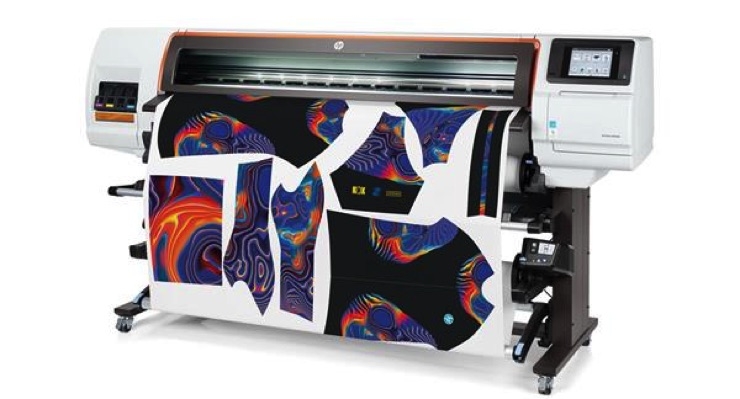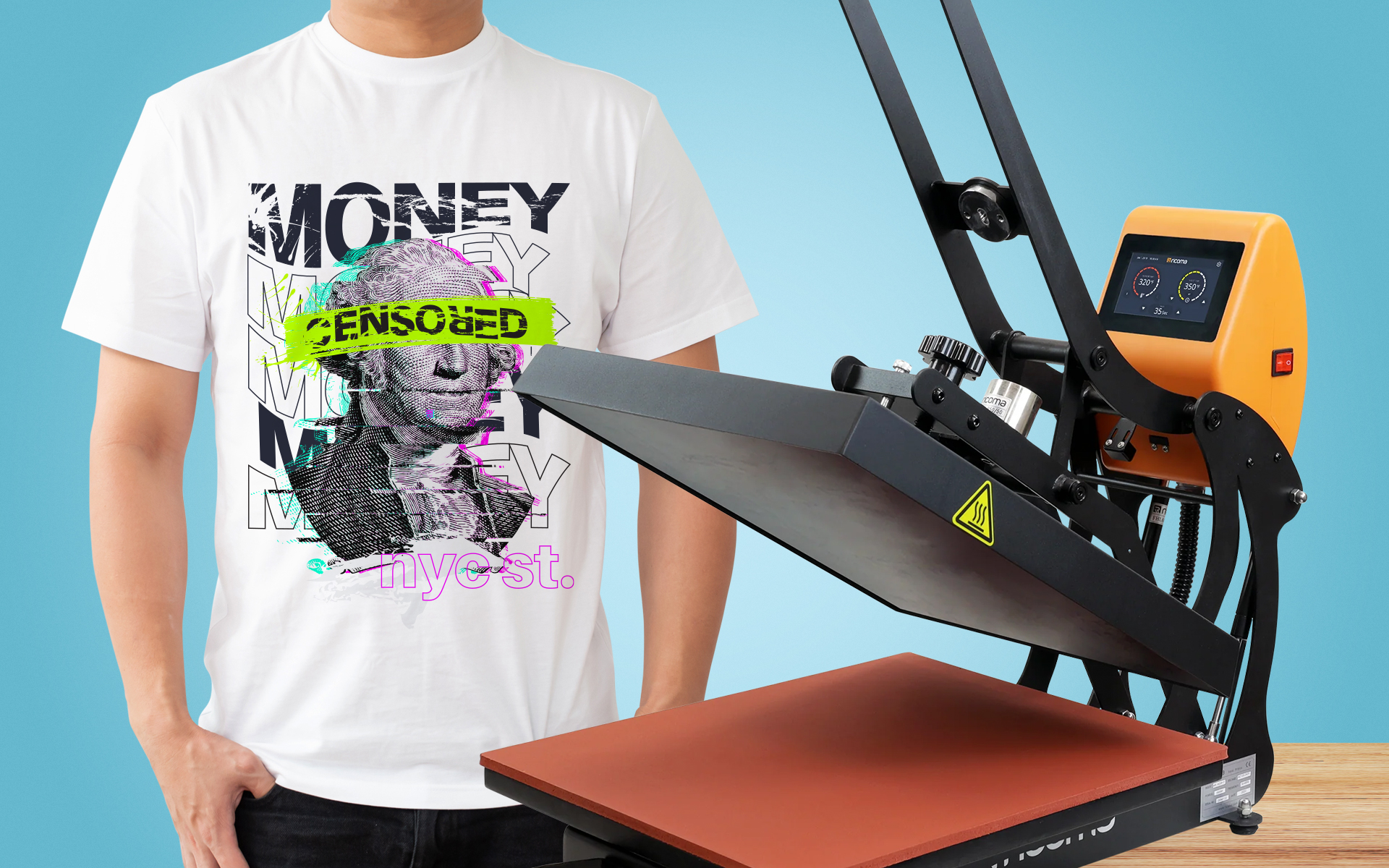How Screen Printing Revolutionizes the Branded Clothing Sector
A Comprehensive Overview to the Various Sorts Of Cloth Printing Methods
Starting an exploration of towel printing methods reveals a remarkable intersection of custom and advancement. Each method, from the precise workmanship of block printing to the rapid effectiveness of display printing, offers one-of-a-kind functions and offers distinct benefits. Digital printing's flexibility and environmental consciousness stand in raw comparison to the speedy customization of heat transfer printing. Dye sublimation printing captivates with its capability to produce vivid, enduring styles on artificial materials. To truly comprehend the nuances and possible applications of these varied strategies, a deeper examination is vital.
Block Printing
Block Printing, one of the earliest approaches of textile decoration, has an abundant background that dates back to old human beings. The process involves carving elaborate designs into wood blocks, which are after that dipped in color and pushed onto material to develop patterns.
The accuracy and craftsmanship included in block printing make it a labor-intensive process, but it also allows for a high level of modification. Craftsmens can produce distinct patterns by incorporating various blocks or differing the application of color. This adaptability has actually added to the long-lasting appeal of block printing in both traditional and modern fabric style.
Block printing is especially valued for its visual high qualities, consisting of the minor variations in pattern and color that result from the hand-printing process. These imperfections offer an unique personality per item, differentiating it from mass-produced materials. In spite of advancements in modern printing technologies, block printing continues to be a valued method, celebrated for its historical significance and artistic worth.
Screen Printing
Display printing, another noticeable textile decor method, has transformed the industry with its performance and flexibility. This method entails developing a pattern, called a screen, and utilizing it to use layers of ink on the printing surface area. Each shade in the design requires a different screen, which enables detailed and dynamic multi-colored prints.

Among the key advantages of screen printing is its adaptability to different types of materials, consisting of cotton, polyester, and blends. This technique is especially ideal for large-volume orders due to its cost-effectiveness and speed. The toughness of the prints is another significant advantage, as the ink bonds well with the textile, making certain resilient designs that endure multiple laundries.
As soon as dried, the style is transferred onto the emulsion-coated screen using a UV light source. Ink is then pushed through the stencil onto the fabric using a squeegee.
Screen printing is widely used in the garment industry, promotional items, and personalized clothing. Its ability for high-quality, detailed prints secures its status as a keystone strategy in fabric printing.
Digital Printing
Digital printing has promptly arised as a sophisticated strategy in the textile industry, leveraging sophisticated innovation to generate high-resolution layouts straight onto fabric. Unlike conventional approaches, digital printing uses inkjet printers to down payment pigment or dye-based inks onto fabrics, making it possible for detailed and dynamic patterns with a remarkable level of detail and shade precision.
One of the key advantages of digital printing is its flexibility. This approach permits on-demand printing, which dramatically lowers waste and decreases supply expenses. In addition, it sustains brief runs and custom-made layouts, making it ideal for limited-edition collections and bespoke tasks. The removal of screens and various other configuration needs additionally enhances efficiency, reducing manufacturing time and labor expenses.
Moreover, electronic printing is eco friendly. sublimation printing. It uses water-based inks and calls for much less water and energy contrasted to conventional techniques, straightening with sustainable practices. The precision of digital printing also permits making use of a broader variety of fabrics, consisting of cotton, silk, polyester, and blends, ensuring versatility across different applications
Warm Transfer Printing
Just how does heat transfer printing change textile layout? Heat transfer printing includes utilizing warmth and stress to transfer a layout from a particularly created paper onto textile.
Among the main advantages of warm transfer printing is its capability to create top quality, thorough images quickly and successfully. It is specifically fit for small production runs and custom orders, making it a popular selection for tailored garments and promotional items. Additionally, this strategy is flexible, fitting different kinds of textiles including cotton, polyester, and blends.
In helpful site addition, heat transfer printing is reasonably cost-effective contrasted to other techniques, as it calls for very little setup and lower preliminary financial investment - screen printing. This price, coupled with its capacity for producing vivid, resilient prints, underscores its crucial function in modern textile style

Dye Sublimation Printing
Dye sublimation printing, a sophisticated material printing technique, supplies unparalleled vibrancy and durability for styles on various artificial materials. This method entails converting solid dye into a gas without passing via a fluid state, permitting the dye to permeate the fabric perfectly. The process starts with printing the design onto an unique transfer paper utilizing sublimation inks. The published transfer paper is after that put on the material, see this here and both go through high warm and pressure utilizing a warm press. The warmth triggers the dye to sublimate and bond with the material fibers, creating an irreversible, high-resolution print that resists fading and fracturing.
One of the essential advantages of color sublimation printing is its capacity to generate continuous-tone prints with vibrant colors and complex information. Unlike other printing techniques, the dye ends up being part of the material rather than sitting on top of it, resulting in a breathable and soft coating.
Verdict
Block printing is revered for its artisanal top quality, while display printing is helpful for high-volume production. Digital printing offers versatility and environmental advantages, whereas warm transfer printing is optimal for quick modification.
Each technique, from the precise craftsmanship of block printing to the quick effectiveness of screen printing, offers one-of-a-kind functions and provides distinct advantages. Digital printing's versatility and environmental consciousness stand in stark contrast official source to the speedy modification of warmth transfer printing. In spite of developments in modern-day printing innovations, obstruct printing continues to be a treasured technique, commemorated for its historical value and creative value.
Dye sublimation printing, an innovative material printing technique, supplies unequaled vibrancy and longevity for layouts on different artificial materials. Digital printing provides adaptability and environmental advantages, whereas heat transfer printing is excellent for fast modification.